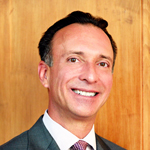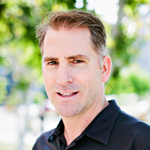Can you juxtapose Ashland’s old and new business models and explain why, after almost a century in business, a strategic shift was in order?
Peter Ganz: Ashland has gone through a successful transformation in the last 10 years to become a leading global specialty chemical company. In many ways, we’re a 90-year-old, “new” company. Just a few years ago, we were a midwestern-based petroleum refiner and marketer, and construction and chemical-distribution company. Following more than two dozen divestitures and acquisitions, today we are a global manufacturer of high-value specialty ingredients that provide key performance attributes in a variety of product lines, including personal care products, pharmaceuticals, paints and coatings, energy, and adhesives. Essentially, we sell to companies who produce products for the middle class, and the middle class is growing fastest in China, India, Brazil, and other developing countries. We’re still headquartered on the banks of the Ohio River in Covington, Kentucky, but our products, operations, and employees are across the country and all over the world.
From the general counsel’s office, what does that change mean for you?
Ganz: The speed and scale at which Ashland was transforming attracted me because it gave me an opportunity to have an active role as a leader in a very dynamic business environment. I spend perhaps half my time as the senior legal officer dealing with the multifaceted legal challenges posed by a publically traded, multinational chemical manufacturer, but the other half I’m thinking less as a lawyer and more as a senior business leader. Now that we’ve transformed into a specialty chemical company, where and how we grow to become one of the best such companies in the world is our main focus. That is a fun and challenging place to be as a lawyer and a businessperson.
What are some of the ways you’re elevating Ashland’s status now that you’ve successfully redefined the business?
Ganz: As we have redefined our businesses, we need to constantly reevaluate how we organize and structure ourselves to operate as efficiently and effectively as possible. We’re constantly reviewing our portfolio and looking for new opportunities. There are a lot of good projects and opportunities, but the challenge is to pick the best ones. More valuable than money, sometimes, is the focus, attention, and energy of the management team and where and how to direct those more intangible resources.
What kind of legal demands does this new portfolio place on Ashland and your team of lawyers?
Ganz: With approximately half our business outside the US—previously, non-US sales constituted only about 15 percent of the total—our overseas operations are not just foreign outposts anymore but rather are at the heart of our business. The legal function needs to reflect that reality by taking a more regional approach. We also need to think about legal issues of global trade, because we’re crossing more borders with our products. Our product lines—particularly in personal care, pharmaceuticals, and food and nutrition—are more highly regulated, and in a different way, than the petroleum and commodity chemicals previously at the heart of our business.
Where does this leave your lawyers? I’d imagine you have some specialists whose expertise is less relevant, as well as some gaps in knowledge to fill.
Ganz: My goal in joining Ashland was not to recast our legal team, either internal or external, just because I was new. I was fortunate that we had many very fine, experienced lawyers when I arrived. Some changes had to be made, but generally, I tried to redirect resources, break down some artificial walls between groups more characteristic of a “conglomerate” model, and supplement with knowledgeable outside resources until we determined how to organize internally. For example, issues concerning global trade had to have a more dedicated legal focus, so I identified one of our commercial lawyers who had some expertise [and asked him] to devote all his time to the area. For some of the specific regulatory issues posed by our new depth in areas such as pharmaceuticals, personal care, and nutrition, we relied more on outside counsel while we developed internal expertise. While we were doing this, we also strove to reduce our legal spending consistent with the goals of the rest of the redesigned company.
How do you foster a culture of partnership between your lawyers and the business?
Ganz: With a company that has been around as long as Ashland—and has experienced as much change as we have—you tend to have more layers of people, more process, and more “check the box” thinking than may be necessary. I tried to streamline our legal function by having fewer lawyers reporting to other lawyers. I find having too many levels discourages each lawyer from taking ownership of his or her area. Our lawyers are true business partners of the executives with whom they work because they are embedded in their particular business groups. At the same time, we try to operate as a unified legal team across businesses, geographies, and specialties. I like to say that no lawyer can be expected to have all the answers, but the first call should be to a colleague in the group. Only later should we bring in outside legal expertise when necessary; the primary legal adviser to the business should always be the internal lawyer. That is why you have to invest in your team.
How do you handle change management?
Ganz: In some sense, it’s harder for lawyers to deal with change because they’re conservative and generally risk-adverse by nature. Part of managing lawyers is to respect that basic mind-set and understand it. But lawyers are very good problem solvers, so if you frame change as a problem to solve, you can engage your department to provide creative solutions. And once you get buy in, no one drives to achieve a goal like a motivated lawyer. We like to win.

